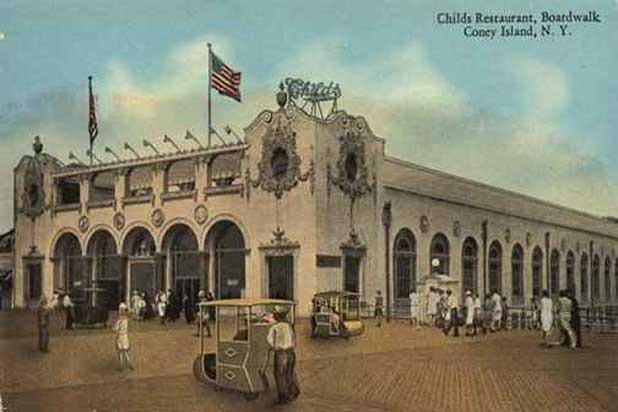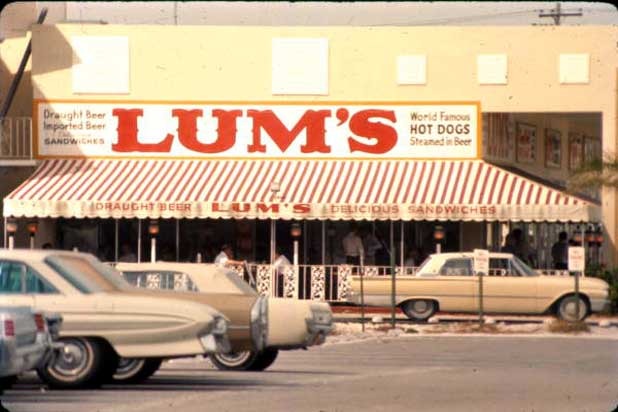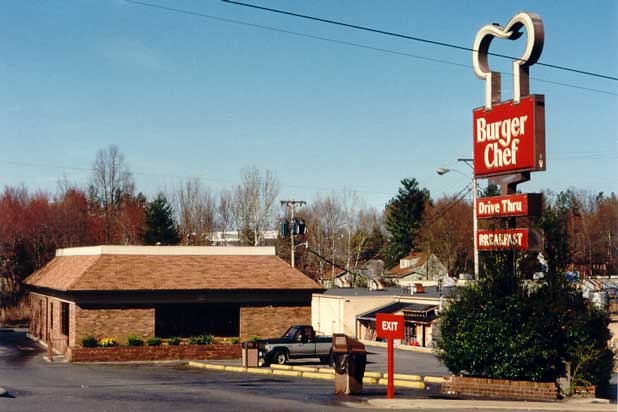The 11 Biggest Failed Chain Restaurants Slideshow
Even though there were only 10 locations of the Planet Hollywood-owned All-Star Café in its late '90s-heyday, odds are you knew about this chain, especially if you were a kid during the decade. Sports icons such as Andre Agassi, Joe Montana, Ken Griffey Jr., and Shaq all invested in the project, and some appeared in commercials for it, which opened in prime locations across the country including New York City's Times Square and Walt Disney World. The chain was equal parts gift shop, memorabilia store, and restaurant, and never quite had the same appeal as similar theme restaurants like the Hard Rock Café and Planet Hollywood. The last one, located in Walt Disney World's Wide World of Sports, closed in 2007.
10) Steak and Ale
This brainchild of Norman Brinker, who also gave us Jack in the Box and Chili's, didn't do quite as well as his other inventions. Launched in Dallas in 1966, it introduced America to the self-service salad bar and did gangbusters in its first years (selling an 8-ounce filet for $1.95 didn't hurt), and by 1976, when he sold the chain to Pillsbury, there were 109 restaurants in 24 states. This was the beginning of a major boom in "fast-casual" dining, however, and the chain just couldn't keep up. Metromedia eventually purchased the brand, and shut down the last 50 locations in 2009.
9) Childs
No discussion of the history of American dining is complete without a major acknowledgement of the role that Childs played in developing the restaurant as we know it. When the first Childs opened in 1889 in downtown New York, restaurants were either high-end affairs like Delmonico's, or more everyman lunch counters and oyster houses. Childs, with its emphasis on low-price, quality food, intelligent design, hygiene, good service, and expansion, set the stage for modern inexpensive dining.
Childs was one of the first national dining chains, and by the time it reached its peak in the 1930s there were about 125 locations in dozens of markets throughout the country. Poor management (including an ill-conceived vegetarian push from co-founder William Childs) reduced that number to 53 by 1950, and in 1960 it was swallowed by the Riese Organization, which also owns Dunkin' Donuts, KFC, Pizza Hut, T.G.I. Friday's and Houlihan's, and was completely phased out.
8) White Tower
This early chain, which began in Minneapolis in 1926 as a blatant White Castle knock-off (right down to the fake turrets), opened more than 120 locations before White Castle sued them in the early 1930s, and White Tower settled by paying White Castle $82,000 and changing their look to Art Deco. The chain stuck around for a while longer, peaking at 230 locations in the 1950s before folks began to move away from the urban areas where they were located. The last one shut down in Toledo in 2004.
7) Chi-Chi’s
The first Chi-Chi's Mexican Restaurante opened in downtown Minneapolis in 1975 and was one of the breakout restaurants of the year, pulling in $2 million. Founders Marno McDermott and Max McGee's creation had basically no competition in the Midwest, and by 1986 a whopping 237 locations had been opened, with 42 opening in 1985 alone. From there, unfortunately, it was all downhill. Attempts at expanding to New York City, New England, and the South failed, and increased competition combined with aging baby boomers and a decline in alcohol consumption spelled its doom. Locations fell to 144 by 2002, and a month after filing for bankruptcy in 2003 green onions served at a Pittsburgh-area outpost set off the largest hepatitis-A outbreak in American history, sickening 660 and killing at least four. The remaining 65 restaurants closed the following year, and today the brand only exists in the U.S. as a salsa brand owned by Hormel, which licensed their name. Oddly enough, there are 11 Chi-Chi's still open in Europe, with eight in Belgium.
6) Lum’s
This chain of hot dog stands was founded in Miami Beach in 1956 by the Pearlman family, and at its peak there were more than 400 locations nationwide. The South Florida fixture, whose trademark was hot dogs steamed in beer, was so successful, in fact, that the company went public and bought Caesars Palace in Las Vegas in 1969. The chain was purchased by Wienerwald in 1978, but overextended itself and filed for bankruptcy a few years later.
5) Kenny Rogers Roasters
If you best remember Kenny Rogers Roasters from a classic Seinfeld episode, you're not alone. This chain, which the singer launched in 1991 along with KFC mogul John Y. Brown, expanded out to 425 locations, but a country singer's name and a focus on rotisserie chicken didn't exactly make it standout in an already crowded field, and it went bankrupt in 1998 after being bought by Nathan's. While there's only one outpost still in business, in Ontario, Calif., it's doing surprisingly well in Asia, where there are more than 100 locations.
4) Minnie Pearl’s
Grand Ole Opry legend Minnie Pearl affixed her name to this chicken chain, which was launched by Nashville attorney John Jay Hooker in 1966, the company went public in 1968, and over the course of the next few years more than 500 locations opened and thousands more were franchised out, although a lot of those franchises never saw the light of day. As opposed to taking the path that rival KFC took, growing organically and focusing on quality and consistency, so many outposts opened that no two chicken recipes were the same, and people simply stopped going. Investors sued the company after they were forced to redo their 1968 taxes to show a loss of more than $1 million, and the company shut down shortly thereafter.
3) Howard Johnson’s
Howard Johnson's is synonymous with 1950s and '60s dining. It was launched by Howard Johnson himself in the 1920s as a soda fountain and lunch counter, and by 1954 there were 400 outposts in 32 states. One of the first major restaurant chains, it went public in 1961 with 605 restaurants as well as 88 motor lodges, both of which were major fixtures dotting the new American highway landscape that was growing during this time.
The company peaked in in the mid-1970s, but business fell off after that. The business model of serving pre-made high-quality food in traditional dining rooms lost popularity amid the boom in fast food like McDonald's, and after many changes in ownership over the years only two Howard Johnson's restaurants remain, in Lake Placid, N.Y., and Bangor, Maine.
2) Sambo’s
When Sam Battistone and Newell F. Bohnett decided to open a restaurant in Santa Monica in 1957, they just combined Sam's first name with Bohnett's last name, and Sambo's it was. Little did they realize just how many people would take offense at the assumed connection to the children's book Little Black Sambo, especially after the restaurants were decorated with scenes from the book. Regardless of the association, the restaurant was a huge success and there were 1,117 locations in operation at its peak in the early 1980s. The company's finances began to crumble just as it became a lightning rod for its insensitive name, and its collapse was epic. In 1983 618 locations were renamed Season's Friendly Eating, and soon after some were sold to Denny's and the rest simply shut down. Today there's only one Sambo's still around, in Santa Barbara, Calif.
1) Burger Chef
In 1958, a technological wonder of a chain restaurant opened, with the capacity to pump out burgers faster than even McDonald's could: 800 per hour, via a conveyer broiler. It seemed like the perfect formula for success, and Burger Chef's optimistic parent company, General Equipment, opened 1,200 outposts by 1972, making it second only to McDonald's 1,600. They also pioneered the concept of selling a child-oriented meal of a small burger, fries, drink, dessert, and small toy in 1973 (they called it a "Fun Meal;" McDonald's called it a "Happy Meal" when they "borrowed" the idea six years later). But it was overexpansion that eventually did the company in; in 1981 the company was sold to Hardee's, never to be heard from again.










